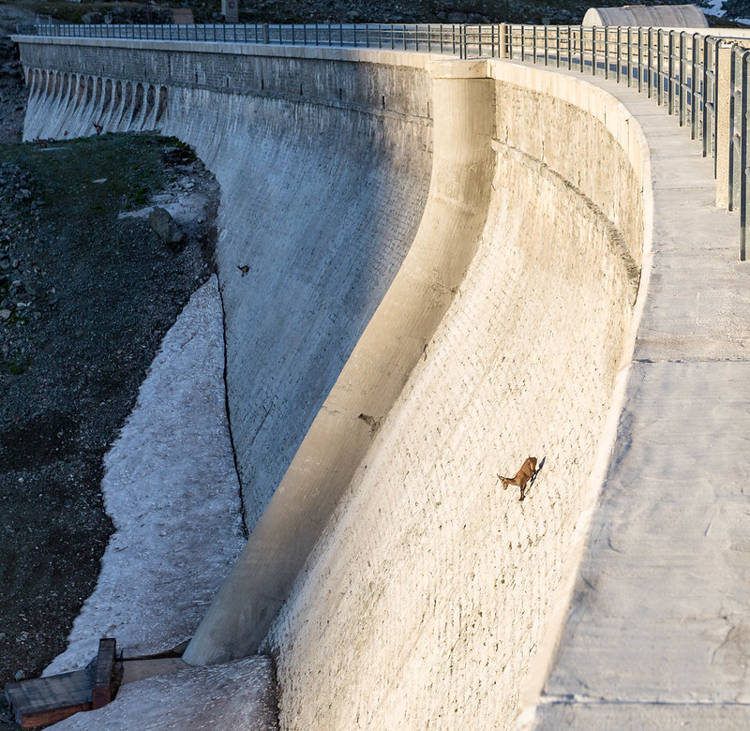The Alpine Ibex is a species of big mountain goat-like herbivores that inhabit the highest peaks of the European Alps, using their pincer-like hooves and impressive agility to climb up even the steepest cliffs, thus avoiding most predators. But it’s their ability to climb even vertical walls that has made ibexes famous all over the world.
The Cingino Dam, located in Italy’s Piedmont region is one of many masonry dams in the European country, but it became somewhat of a tourist attraction a few years back, after photos of ibexes climbing the vertical damn all the way to the top went viral online. And looking at these photos, or watching the videos of the herbivores expertly traversing the seemingly unclimbable structure, it’s easy to see why millions around the world declared themselves fascinated. Somehow, the ibexes are able to grip any rock that protrudes from the dam ever so slightly, which allows them to scale the 50-meter-high wall and reach the mineral they so desperately crave – salt.

Photo: Fulvio Spada/Flickr
Ibexes’ herbivorous diet is lacking in salt, but they need it to properly function. Without it, their bones aren’t strong enough, their nervous system and muscles don’t function properly, so they’ll stop at nothing to get it. In the spring, when ibexes come down from the mountaintops, it’s not uncommon to see them licking roads that have been treated with anti-frosting salts, or munching at dirt, in search of salt. But getting this much needed salt isn’t always easy.
One source of precious salt that only the ibex can reach is found high up on dam walls like that of Cingino. Ettringite, also called Candlot’s salt, is a hydrated calcium alumi no-sulfate that forms during the hydration of portland
cement. It’s an especially valuable nutrient for ibexes, because of the calcium it contains, and they’ll stop at nothing to reach it.
Photos of ibexes perched on vertical dam walls have been circulating online for years now, and while most of them were taken at Cingino Dam, in Piedmont, such behavior was observed at other dams in Italy, like Barbellino, a 65-meter-high dam in Lombardy, or Lago della Rossa dam, a 31-meter structure in Piedmont.
Interestingly, while ibexes as a species are praised for their ability to climb dizzying heights in search of salt, when it comes to scaling dams, not every specimen is up to the challenge. For example, large males have not been observed to engage in this kind of behavior, probably because their large body mass (up to 100 kg) and large horns make it harder to keep their balance. It’s females and their young that are most often seen scaling the dams.
So how do ibexes manage to scale these vertical concrete structures? It’s all in their hooves, apparently. Their hooves are made up of two toes that move independently from each other. The lower part of each toe is made of a strong exterior and a soft internal part that allow the ibex to bend and grip extremely narrow surfaces.
Even if they lose their balance and slip, ibexes are somehow able to grip the first protruding rock they meet on their way down, and they simply carry on with their climb. It’s one of the most remarkable things you’ll ever see. And to think we came so close to rendering these fascinating creatures extinct.
In the 19th century, due to over-hunting for meat consumption and the supposedly curative properties of their horns, ibexes were down to around 100 specimens in the western Alps. Luckily, conservation efforts and the establishment of the Gran Paradiso National Park helped ibexes come back from the brink. Today, an estimated 50,000 specimens are once again spread across the Alps.






